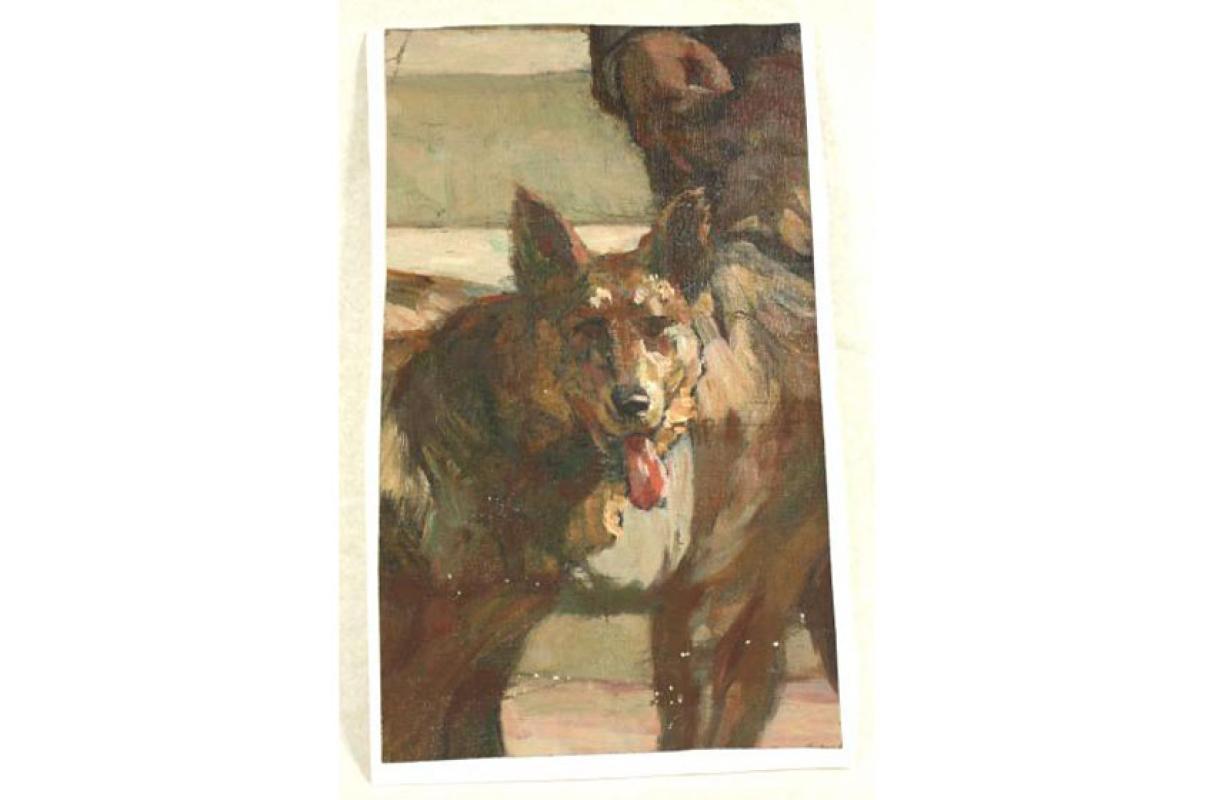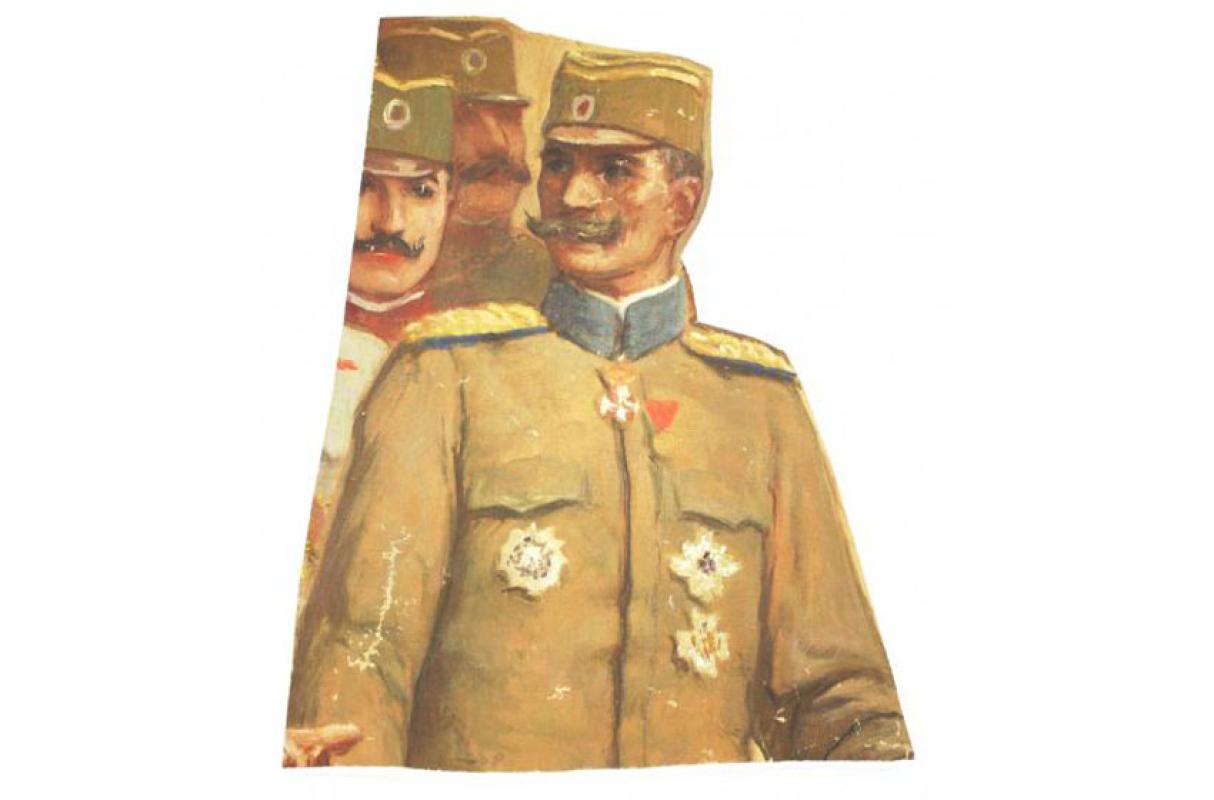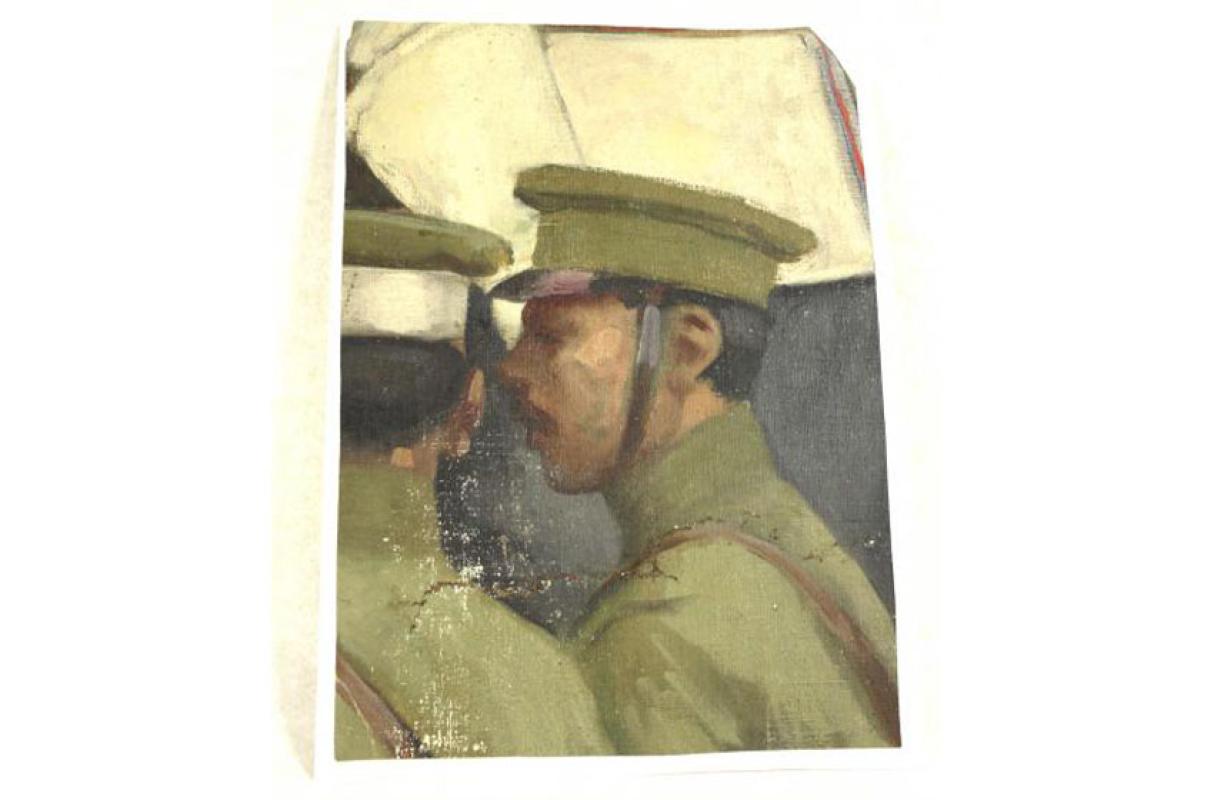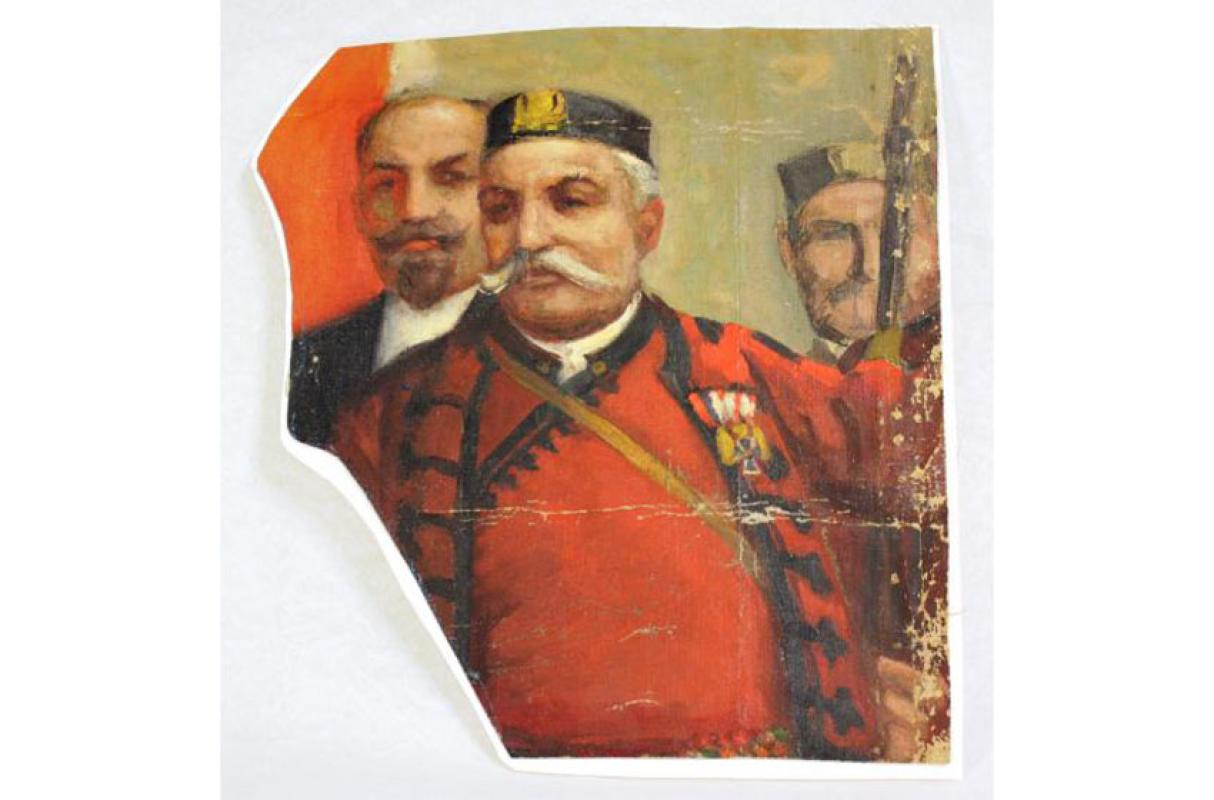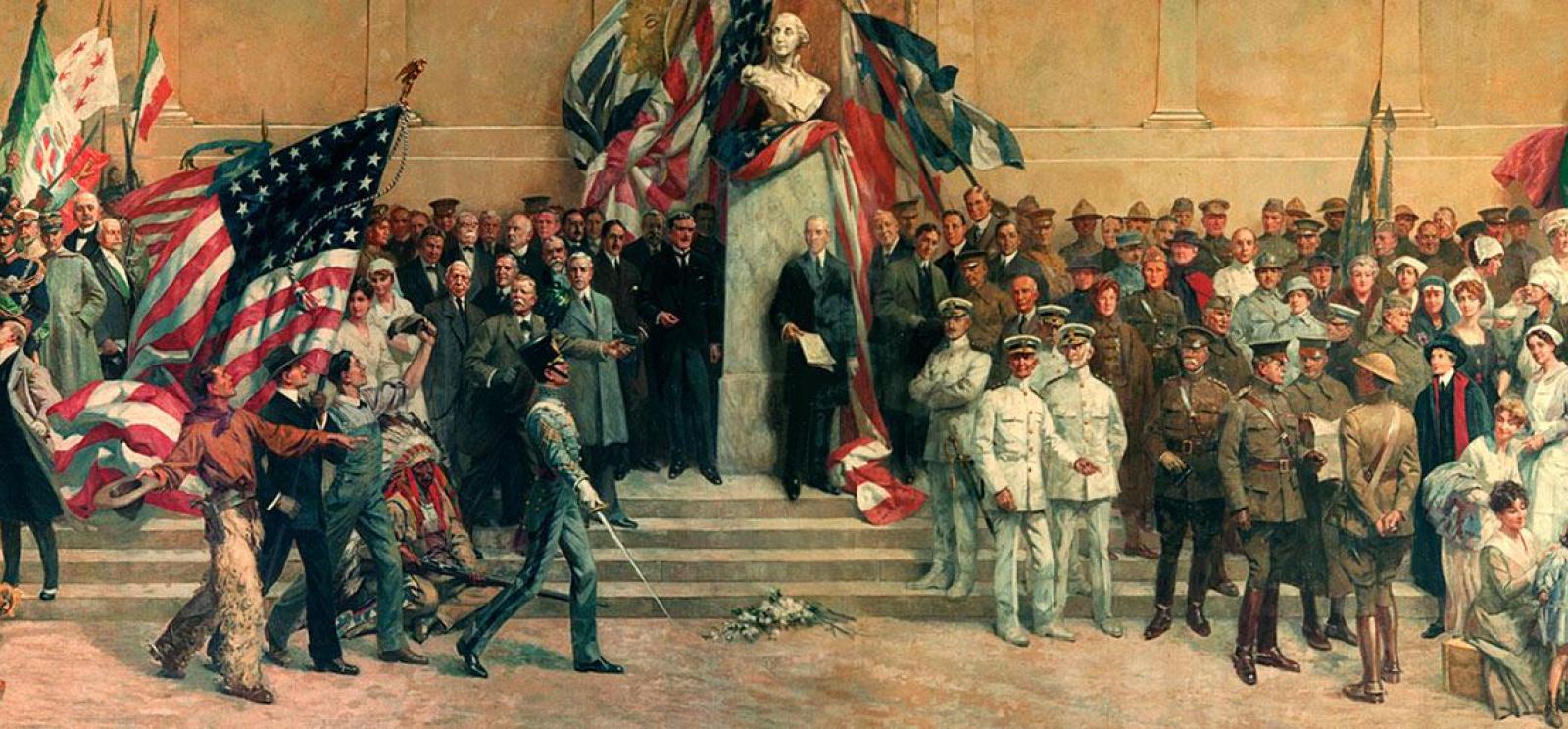
Panthéon de la Guerre
A special exhibition tracing the Panthéon de la Guerre’s remarkable journey opened in 2012 in conjunction with Inventing the Modern World: Decorative Arts at the World’s Fairs, 1851-1939, a major traveling exhibition that visited The Nelson-Atkins Museum of Art.
Panthéon De La Guerre: From Paris to the Chicago World’s Fair to Kansas City explored the history of the famous mural housed in Memory Hall through photographs, video and original wartime paintings that were used to guide the Panthéon’s artists. Additionally, the exhibition displayed sections excised from the painting that had not been seen by the public since 1940.
“For more than 50 years, the Panthéon de la Guerre has been admired by guests who visit Memory Hall but few people know the fascinating story behind it,” said Senior Curator Doran Cart. “With this special exhibition, we were pleased to share the rich history of this one-of-a-kind work of art that has become a priceless part of the Museum and Memorial.”
Mark Levitch co-curated the exhibition with Museum and Memorial staff and is author of the book, Panthéon de la Guerre: Reconfiguring a Panorama of the Great War, (University of Missouri Press and the National WWI Museum and Memorial, 2006).
"Revered, forgotten and eventually repurposed, the Panthéon de la Guerre is a unique testament to how World War I was remembered through the course of the twentieth century," said Levitch. "Staging the exhibition in Memory Hall affords us the exceptional opportunity of tracing the Panthéon’s epic history – stretching from Paris to Kansas City – at the foot of the painting in its final, reconfigured form.”
About the World’s Fair and Panthéon de la Guerre
Huge crowds milled about. Flags of the world snapped in the breezes of Lake Michigan. Cascades of ever-changing blue, orange and yellow electric bulbs lit the night. Whirling carnival rides elicited screams of joy and fear. This and thousands of other sights made up the Chicago World’s Fair of 1933-1934.
What did the World’s Fair have to do with the World War that ended fifteen years earlier? At the north end of the Fair’s midway, near roller coasters and alligator wrestlers, a circular building housed the war’s single most ambitious artistic undertaking: The Panthéon de la Guerre. Painted in Paris as the Great War raged, the massive panorama – at 402 feet in circumference and 45 feet in height, the largest painting in the world – depicted about 6,000 prominent Allied wartime figures.
Forgotten after its interwar U.S. tour, the Panthéon was stored outdoors until Baltimore restaurateur William Haussner bought it at auction in 1953. In 1957, Kansas City artist Daniel MacMorris persuaded Haussner to donate the panorama to the Liberty Memorial Association. MacMorris cut and pasted sections from the huge canvas, rearranged them around the American section, and fit the newly configured composition to the north wall of Memory Hall, where it remains today.
